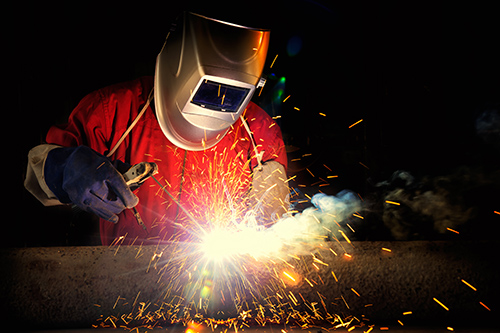Which Shade of Welding Lens Do I Need?
1 Comment5 June 2018 | Eugene
Welding helmets come in all sorts of styles and designs, and while the look of a helmet might be what draws you in, the protection it provides should be your top priority. Protection from sparks and mechanical hazards is always important to consider, but just as important is the protection your welding filter provides to your eyes. While some helmets will list their shade level from 9 - 13, others will provide a wider range like 5 - 13, but what does this mean, and what shade do you need for welding applications you'll be doing?
What are Welding Lens Shade Numbers?
While all good welding filters will block out 100% of harmful UV and infrared light, certain types of welding, brazing or torch-cutting will produce electromagnetic energy (often referred to as radiant energy) at wavelengths and intensities that can cause damage to your eyes. Choosing the right shade number for your type of welding is crucial to your safety, comfort and quality of work, as too light of a welding filter will make viewing your workpiece uncomfortable, while too dark of a lens will provide you with an insufficient view of your welding arc.

Welding processes produce radiant energy that can cause serious injury to the eyes
Simply put, a high shade number will provide a high level of darkness and will be suitable for welding that produces a very bright arc. Conversely, a low number will provide a brighter view, which will allow a high degree of visibility that will be ideal for welding with a duller arc. When selecting the right shade for you, it's best to find the perfect balance between protection and comfort, as you want to be protected from eye strain while still retaining a clear view of your work.
How Do I Choose a Shade Number?
Your choice of welding filter shade should depend on a number of factors:
- What kind of welding will I be doing?
- What kind of amperage will I be using?
- Will I be switching between welding processes?
While certain welding applications and processes will have recommended shade numbers, it's important to consider your amperage, materials and equipment. Anyone who frequently switches between applications and processes, or often requires adjustment to their voltage or amperage, will benefit from a helmet with a wide shade range, such as 5 - 13 rather than 9 - 13. This wider range will allow the welder to quickly optimise their shading for comfort, visibility and safety, improving both comfort and quality of work.
Lens Shade Number Guide
To get a better idea of the shade you should be using for your welding, match your welding application and amperage to the graph below. When selecting your welding lens filter, start with a shade that is too dark to see the weld zone, then gradually decrease the shade until your view is comfortable with sufficient visibility.

Keep Your Eyes Covered
The information provided here can help you with your welding helmet selection, but your helmet will only protect you if you use it properly. Your helmet's filter lens will protect your eyes if you use the proper minimum shade and if you view the radiant energy source ONLY through the filter. Keep your eyes adequately covered, and you shouldn't have a problem.
Do you have a question, or would you like a recommendation? You can leave a comment in the comments section below, and we'll get back to you as soon as we can.
Thank you, it would be good if you briefly explain the light levels and dangers associated with each process to justify the shade recommendations. - WelderReview.com